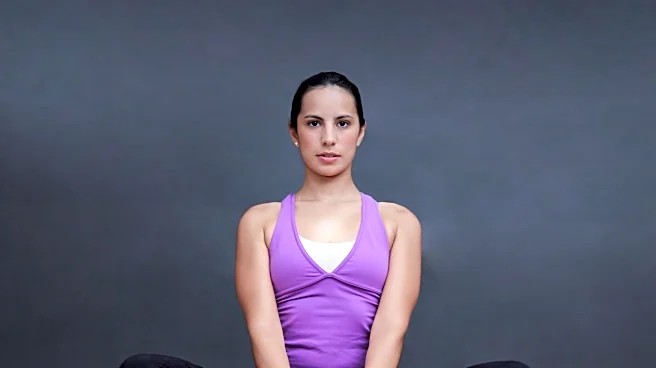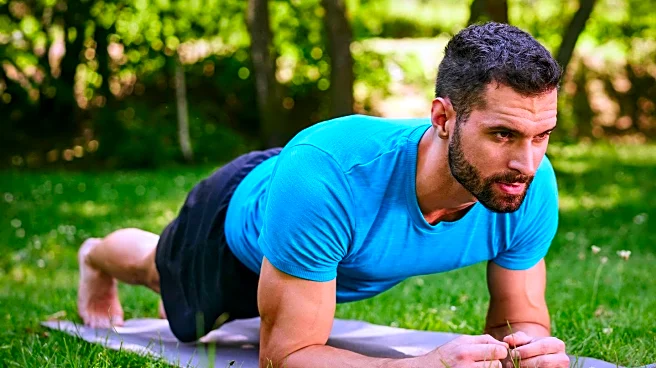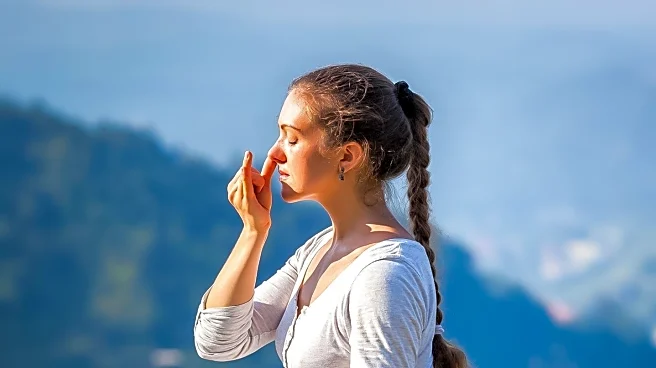What is the story about?
What's Happening?
Yoga instructor Veronique Ory has identified three yoga poses that can help improve hip mobility, particularly for individuals experiencing pain, soreness, or stiffness in their hip flexor muscles. These poses are designed to be accessible and scalable, incorporating props like cushions and yoga blocks to support a sustainable range of motion. The poses include Deer Pose, Supported Pontoon, and Lizard Lunge, each offering unique benefits for hip mobility and overall body awareness. Ory emphasizes the importance of breath connection and nervous system regulation in yoga, which can aid in functional mobility and stability. These exercises are particularly beneficial for those who spend extended periods seated or are recovering from stiffness due to lifestyle or travel.
Why It's Important?
Improving hip mobility is crucial for maintaining functional movement and reducing discomfort during everyday activities such as bending, squatting, and walking. The recommended yoga poses not only enhance muscular flexibility but also promote joint awareness and nervous system regulation, which are essential for overall physical health. By incorporating these poses into a regular routine, individuals can potentially alleviate hip-related issues and improve their quality of life. This approach to mobility is particularly valuable for people with sedentary lifestyles or those recovering from travel-related stiffness, offering a gentle yet effective method to enhance physical well-being.
What's Next?
Individuals interested in improving their hip mobility can start incorporating these yoga poses into their daily routines. As mobility improves, the poses can be adjusted for greater challenge and effectiveness. Yoga practitioners and instructors may continue to explore and recommend similar exercises to address specific mobility issues. Additionally, the broader yoga community may focus on developing more accessible and scalable practices to cater to diverse needs, promoting overall health and wellness.
Beyond the Headlines
The emphasis on breath connection and nervous system regulation in yoga highlights the holistic nature of the practice, which goes beyond physical flexibility. This approach fosters a deeper understanding of body awareness and encourages mindfulness, which can have positive effects on mental health and stress reduction. As yoga continues to gain popularity, its integration into daily life may lead to long-term shifts in how individuals approach physical and mental well-being.
AI Generated Content
Do you find this article useful?















